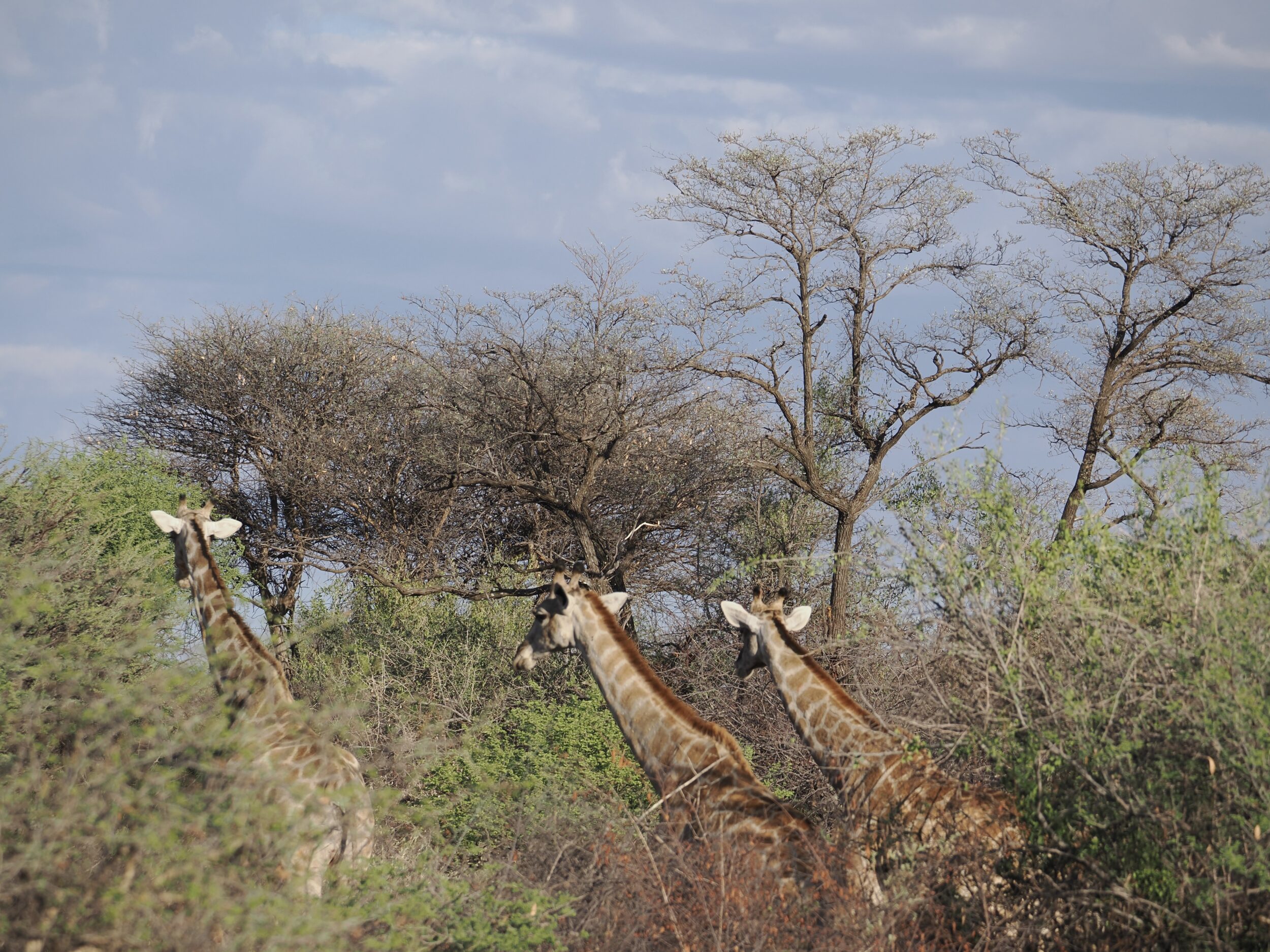Q #1: what has driven some animals to become so remarkably tall?
Q #2: what drove plants to become taller than they might otherwise be, in open woodlands and savanna?
Look at this post’s featured image, and you may have – in part, at least – answered both questions…
..or have you?
In a moist, dense forest, the imperative for a seedling’s survival is to get “up there” – into the direct sunlight – as quickly as possible.
The losers in this race are literally left in the shade.
Accordingly, rainforest canopies are the tops of tall trees that began their long lives as quick-growing youngsters – the survivors of a “race” to claim prime, photosynthesis-maximising “real estate”.
No such imperative applies in drier, open woodlands and savanna grasslands.
However, as anyone who has seen wild giraffes knows, such country is home to “our” world’s tallest animals, and to more than a few “surprisingly” tall trees, with leafy crowns positioned well above any giraffe’s reach.
Traditionally – since Charles Darwin and Alfred Wallace, at least – this has been attributed to an evolutionary contest between browsing mammals and the trees they target; allegedly, both became taller, as trees sought to put their leaves beyond giraffes’ reach.
However, as first widely reported in 2022, palaeontologists studying fossils of ancestors of today’s giraffes – shorter-necked “Giraffoids” from circa 16 million years ago – offer a different explanation:
..sexual competition may have favoured head-bashing giraffoids with slightly longer necks. As individuals of the species used more of their necks in fighting, it gave them the opportunity to breed longer-necked offspring with the unintended benefit of being tall enough to reach for food on top of trees.
Click here for a fuller account.
Further, according to another source, none of the explanations usually offered stands up to rigorous scrutiny.
Craig Holdrege argues that if one looks at the whole giraffe, the longest neck of any living mammal is in fact remarkably short:
I sometimes wonder why no one has maintained that the giraffe has, in reality, a short neck. If you observe a giraffe drinking or, as they occasionally do, grazing close to the ground, then you know what I mean (see Figure 4). Giraffes do not drink often, but when they do, they have to either splay their forelegs to the side or bend their forelegs strongly at the wrist joint. Both procedures take time and are awkward for the giraffe. But only in this way can it get the tip of its mouth down to the surface of the water. So, looked at from the perspective of drinking, the giraffe has a very short neck. Antelopes and zebras reach the ground without bending their legs, and the long-legged elephant has its trunk to compensate for its short neck. Only the giraffe (and its rain forest relative, the Okapi) have necks that are so short relative to their legs and chest that they must splay or bend their legs.
Click this for Holdrege’s full essay.
As is true of many species, there is much lively debate/reconsideration on giraffes’ current species classification.
It is generally accepted that giraffe /giraffoid species numbers have declined, and that today’s world is home to just one giraffe species, which includes a number of subspecies.
Namibia’s many giraffes are all Giraffa camelopardalis angolensis, variously known as the Southern giraffe or Angolan giraffe.
An increasing number of scientists believe the Angolan giraffe should be counted as one of eight living, giraffe species
Click here for more info.
Photo is copyright Doug Spencer, taken at 7.20 am on 04 November 2022 in Okonjima.
